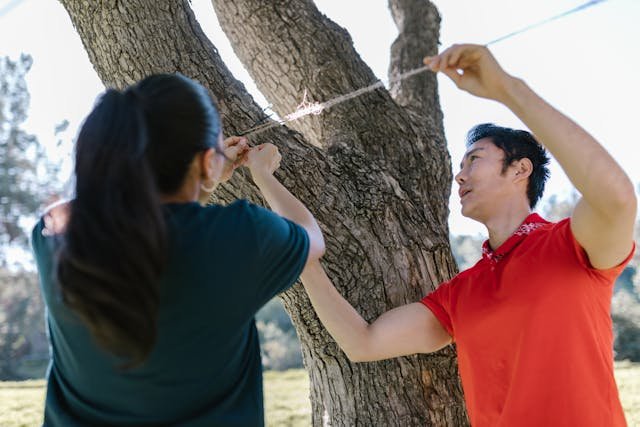Recognizing the First Signs of Tree Distress
Regular surveys by trained professionals can identify problems early and treat them. They can reveal less obvious hazards like decay or insect tunneling and provide tailored recommendations for soil improvements and pruning schedules.
Trees can display subtle warning signs when in trouble, such as yellowing or browning leaves, wilted or curled foliage, patchy crowns, peeling bark, mushroom clusters, or brittle branches. Observing these signs can help property owners identify potential issues and prevent damage.
For a consistent, thorough inspection process, scheduling a professional tree survey Fort Worth—or one in any city—builds a baseline for long-term health. These surveys provide insights into nutrients, soil compaction, root health, pest activity, and even subtle trunk injuries that may otherwise go unnoticed.
Pest Infestations: Spotting and Solving the Issue
Insects can quickly damage mature trees, causing damage such as holes in leaves, sticky excretions, and sawdust at the base. Birds and aphids can also attract pests. Integrated Pest Management (IPM) techniques often use nature’s army to control minor invasions. Regular observation and watering can resolve cases in infancy.
If the attack is widespread, professional assistance is needed to identify and address the issue with minimal chemicals, preserving insect balance. Timely action prevents pest reproduction and protects vulnerable trees from future infections or permanent scarring.
Tree Diseases on the Rise
Urban and rural trees face increasing threats from fungal and bacterial diseases, exacerbated by climate change. Symptoms like blotchy leaves, blackened tips, and wilting branches are warning signs, but diseases like oak wilt, powdery mildew, and anthracnose can spread quietly. Global tree disease outbreaks are projected to escalate due to rising temperatures and erratic rainfall.
To prevent the spread, homeowners should prune affected branches, dispose of debris, and sterilize tools. Proactive measures like fungicidal sprays or injections should follow proper laboratory diagnoses.
Environmental Stress Factors & How to Minimize Them
Modern environmental challenges threaten trees, including droughts, compacted soils, de-icing salt, run-off from neighboring lawns, and seasonal temperature swings. Root systems may suffocate or dry out, leading to stunted growth and underdeveloped canopies.
To prevent these issues, effective prevention measures include mulching, watering infrequently, preventing soil compaction with stepping stones, fencing, or signage, and using organic or slow-release fertilizers. These habits prevent slow decline and position trees to resist pest and disease pressures, making them more resilient and valuable over time.
How Proper Pruning Prevents Problems
Pruning is crucial for a tree’s growth and defense, as it improves sunlight and air circulation, suppresses fungal spores, and discourages pests. Trimming branches in late winter or early spring and using clean, sharp tools for smooth cuts and reducing vulnerability to pathogens is essential.
Starting with small, reachable limbs is recommended, while certified arborists ensure the job boosts the tree’s structure and aesthetics for large or valuable specimens. Neglecting pruning can result in tangled limbs and weak points, attracting wood-boring insects.
When Is It Time to Call in a Professional?
Tree issues often require specialized care, such as near buildings or power lines, rapid canopy dieback, visible trunk cavities, and root rot. If left unchecked, these issues can pose safety hazards. Professional arborists use rigorous diagnostic standards, safety gear, and advanced treatments to protect trees, people, neighboring trees, and more expansive landscapes from preventable damage. Their advice can save valuable specimen trees, reduce legal risk, and ensure long-term curb appeal.
